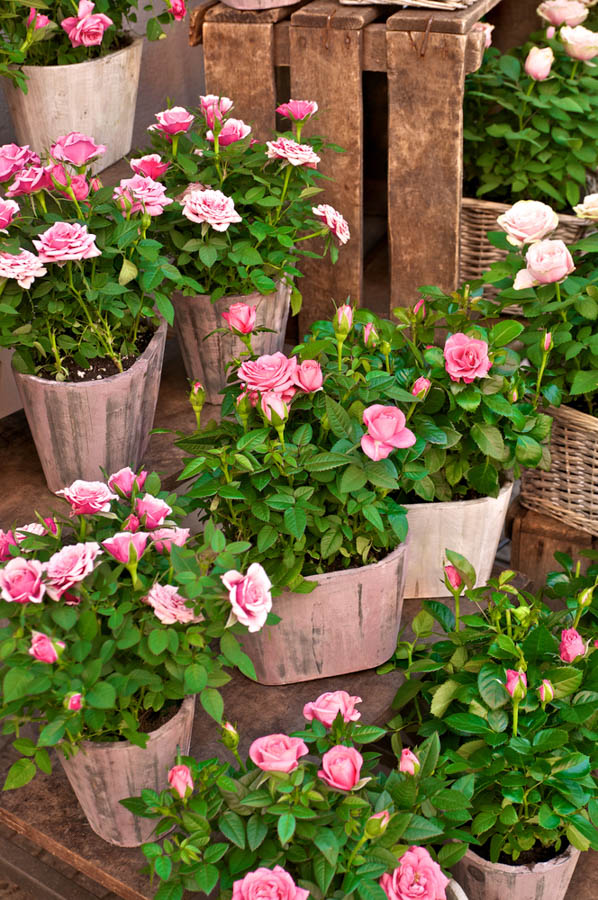Planting Container Roses: Technique, Soil Preparation and Spacing

For those gardeners who have missed bare-root season and have purchased roses in containers, here is our recommended advice for planting container roses.
GardenZeus receives commissions on sales made through links in this post. There is no additional cost to you.
Water your roses well, then allow them to drain overnight before planting.
Use eye protection and wear sturdy gloves, long sleeves, and long pants for safety and to minimize thorn pricks to exposed skin when planting roses.
When planting from containers, remove the plant from the container and gently remove excess soil at the top and bottom of the root ball. Whenever possible, prevent soil from falling entirely off the rootball, as this may shock or kill the plant. Roses should be planted with the root crown and the highest root at or slightly above grade, in a hole no deeper than each plant’s actual rootball. Do not dig a hole deeper than the rose plant’s rootball or disturb soil at the bottom of the hole, as the plant may sink below grade when loose soil beneath roots settles over time, which may result in lifelong stress and ongoing pest and disease problems for the life of the rose plant. Before planting, prune out any dead or broken stems, and cut off girdling, circling, matted, or dead roots, leaving roots that can be spread with a few inches of spacing between them in the planting hole.
GardenZeus recommends adding no organic matter or amendments to planting holes for roses, and instead surface-dressing with compost, composted manures, mulch, and amendments based upon soil-test data, to encourage a healthy soil ecosystem and to require the plant to grow roots beyond the planting hole to meet its needs for nutrients, and therefore establish a healthy root system. When amendments and organic matter is added to planting holes, roses often grow a smaller root system within the richer soil of the planting hole, which is undesirable and may lead to various problems, including less flowering, over the life of the plant.
Water thoroughly after planting.
Rose spacing varies widely by growth habit and type of rose, and is best determined by for exact varieties being planted and the individual gardener’s preferences and needs. Thoughtful spacing is more important for roses than many other flowering perennials, to allow individual plants sufficient sunlight and root space to produce blooms, to allow the plants to display their flowers in the manner desired (such as without crowding for shrub and hybrid tea roses, and in mass displays for climbers), to allow for air circulation to minimize foliar diseases (especially in humid and warm climates), and to allow a gardener space for pruning and tending of roses without having to pose awkwardly or be pricked by thorns. Placement and spacing is especially important near walkways, pools, seating areas, parking spaces, doorways, and play areas, to avoid risking unexpected scratches or frustratingly frequent pruning to maintain usability of these spaces. Spacing and placement of roses can be a complex topic and require careful planning, and is an area in which it can be well worth hiring a skilled consultant or designer who knows roses well. GardenZeus generally recommends 14 to 18 inches for most miniature roses, 2.5 feet for most floribundas, 3 feet for most hybrid tea roses and grandifloras, 3.5 to 4 feet for most shrub and landscape roses, and 7 to 10 feet for most climbers. Spacing for groundcover roses will vary by variety and growing conditions, often 2 to 4 feet.
GardenZeus has customized growing information by plant for your area. To get started, enter your zip code here.
Other articles of interest:
Should Organic Gardeners Fertilize Their Roses?